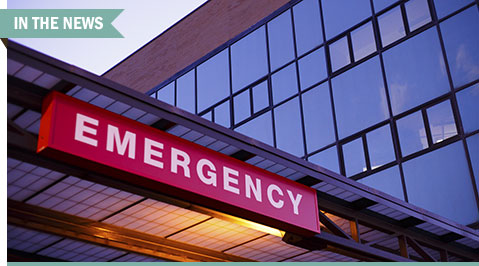 Image credit: MJFelt/Thinkstock
Image credit: MJFelt/Thinkstock
Cardiac troponin levels less than 5 ng/dL measured by a high-sensitivity assay safely rule out heart attack in emergency patients, enabling hospitals to immediately discharge these patients from the emergency department without repeat testing, authors of a new study published in The Lancet concluded.
A rising level of troponin above the 99th percentile of a normal population is one of the criteria for declaring a heart attack. Yet, clinicians have been struggling to understand how to use new high-sensitivity assays in practice because they detect very low concentrations of cardiac troponin even in healthy individuals.
The study’s key objective was to identify a low plasma cardiac troponin concentration (less than5 ng/L) using a high-sensitivity cardiac troponin I (hs-cTnI) assay (Abbott) in patients suspected of acute coronary syndrome (ACS), Fred Apple, PhD, a co-author of the study, told CLN Stat. Apple is the medical director of clinical laboratories at Minneapolis-based Hennepin County Medical Center and professor of laboratory medicine and pathology at the University of Minnesota.
Researchers incorporated the hs-cTnI assay to measure the plasma troponin concentrations of more than 6,300 patients who presented to four Scottish hospitals with ACS symptoms.
“In derivation and validation cohorts, we evaluated the negative predictive value of a range of troponin concentrations for the primary outcome of index myocardial infarction, or subsequent myocardial infarction or cardiac death at 30 days,” the researchers explained in the Lancet article.
Among the test subjects, 782, or 16%, presented with heart attack, with just 1% re-presenting with these symptoms and 2% dying from cardiac events within a month’s time. Most significantly, for those patients who did not present with heart attack, more than 60% had troponin concentrations of less than 5 ng/L, with a high negative predictive value of 99.6%.
These same low-risk patients a year later showed a much lower risk of developing myocardial infarction and dying from cardiac events than those patients whose troponin levels were at or higher than 5 ng/L.
Although the incidence of admitting patients complaining of chest pain to the hospital has tripled over the last 20 years, most don’t end up with a diagnosis of myocardial infarction, said Anoop Shah, MD, the study’s lead author and a cardiology research fellow with the University of Edinburgh, in a statement.
According to Shah, “this study shows that low plasma cardiac troponin concentrations at presentation identify up to two-thirds of patients who are at very low risk of heart attack and could be safely discharged from the Emergency Department. Use of this approach is likely to have major benefits for both patients and healthcare providers.”
This does not suggest that all patients with cardiac troponin levels below 5 ng/L should be discharged from the emergency department, Apple noted, as there might be other reasons that might necessitate hospital admission, such as comorbid conditions.
The findings of Shah and his colleagues provide significant new insights for treating patients for possible heart attack in the emergency department, a related editorial in the Lancet observed. However, some of the findings on troponin assays needed to be taken into perspective. As an example, “all troponin assays are different, and the cutoff and findings described by Shah and colleagues are specific to the troponin assay that they used. These do not apply to any other assays, even other high sensitivity assays,” the editorial’s authors stated.
Apple suggested that laboratory medicine professionals read up on the literature to educate themselves on the different hs-cTnI and hs-cTnT assays the Food and Drug Administration will likely approve for clinical use in the coming years.
According to Apple, “This will allow laboratorians to start a dialogue with their clinical colleagues on how hs-cTn I and T assays will differ from contemporary assays,” on things such as:
- developing novel cutoff concentrations below the 99th percentile for the early rule-out of myocardial infarction;
- more rapid triage and discharge of patients from emergency rooms; and
- sex-specific 99th percentile upper reference limits for myocardial infarction diagnosis.